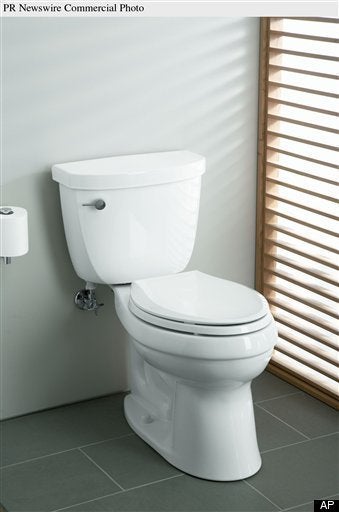
Women have broken through glass ceilings, congressional ceilings, state house ceilings and very nearly the ceiling in the Oval Office. But real equality will only be achieved when women break through the bathroom ceiling and achieve potty parity.
Poor planning is apparent in every public building, particularly theaters where everyone makes a beeline to the restrooms at intermission. Men stroll in and out their doors at leisure, while the line to women's room snakes across the lobby. Why architects don't account for this well-known phenomenon and expand the number of stalls in ladies' rooms is a mystery. The reasons seem obvious:
1. Men don't feel the need as often.
2. They merely have to unzip, point in the right direction and zip back up. Women deal with zippers, buttons and Spanx, clearly a longer procedure.
On occasion, I've ventured into that male bastion, both by design and mistake. At a women's conference in an upscale Denver hotel, a large contingency (including me) commandeered all but one of the men's rooms on the meeting room floor. Before the hotel staff could say, "The health department will shut us down," we simply printed neat signs saying, "Off limits to males," then did a happy dance.
On another occasion, I inadvertently turned left instead of right and found myself in a den of urinals. I counted 12, plus six stalls. I was so annoyed at the obnoxious over-abundance, I uttered an expletive, then stormed through the door, only to come face-to-face with a confused red-faced male who quickly backed out.
When I stomped into the ladies restroom (who rests there, anyway?), I was doubly enraged. I counted the same number of stalls -- six . The problem? Ten women were standing uncomfortably in line. Why not stalls for 12 to equalize the facilities in the men's room across the hall?
I suppose I learned to be discerning about porcelain thrones at my mother's knee. "That bathroom is an absolute disgrace," she would tell me. "Don't touch a single thing!"
Good advice, but impossible to accept when Mother Nature calls.
Apparently, the obsession is hereditary. When my then two-year old daughter was doing the Tinkle Dance, she would take one look at the only gas station restroom in a 200-mile radius, put her hands on her tiny hips, stomp her foot and declare vehemently, "I'm not going in there." Although I begrudgingly agreed - the alternative was using the woods on the side of the road, and the very idea of snakes and creepy-crawlies near my baby girl's buns made me crazy.
What's a mother to do?
She and I apparently passed the anti-dirty potty "gene" to the fourth generation. Both of my granddaughters refuse to use nasty bathrooms, no matter how far away the next one might be.
Since my boys didn't care one way or another, I thought "potty particularity" was the prerogative of the female of the species. But I recently spied a little boy sitting on a potty seat in a retail parking lot, his round, bare pink bottom facing the street. Like an ostrich with his head in the sand, he was happily tending to business while his embarrassed mother apologetically explained to customers, "He refuses to use the bathroom inside."
Remembering the days of our bathroom dilemmas, I gave her a big thumbs up. How I wish I had been a 'Have-Potty-Will-Travel" kind of mom like that woman.
Over the years, I've developed my own rating system patterned like to the "star" and "diamond" method used for hotels and restaurants. Top-of-the-line ladies' rooms like those in Ritz-Carton lobbies rate five rolls of premium toilet paper. McDonald's gets four for clean, utilitarian necessary rooms. Country gas stations earn nary a roll, and porta-potties -- well, they owe me one.
